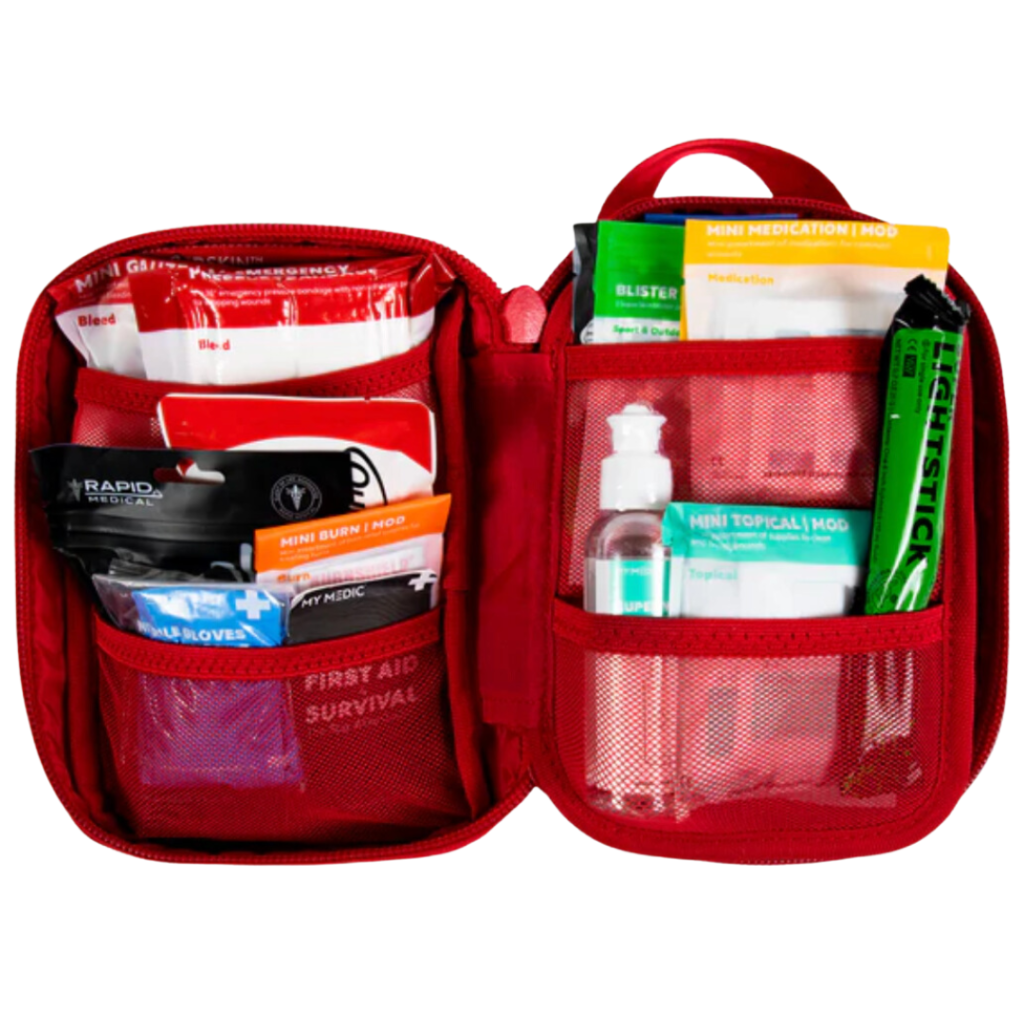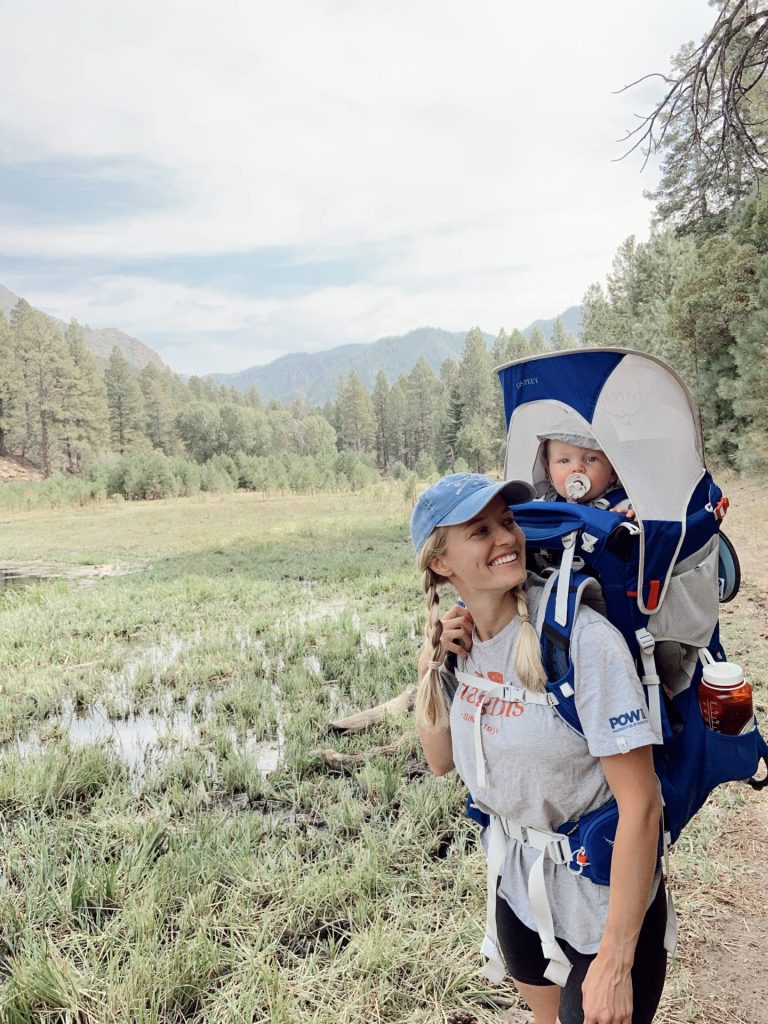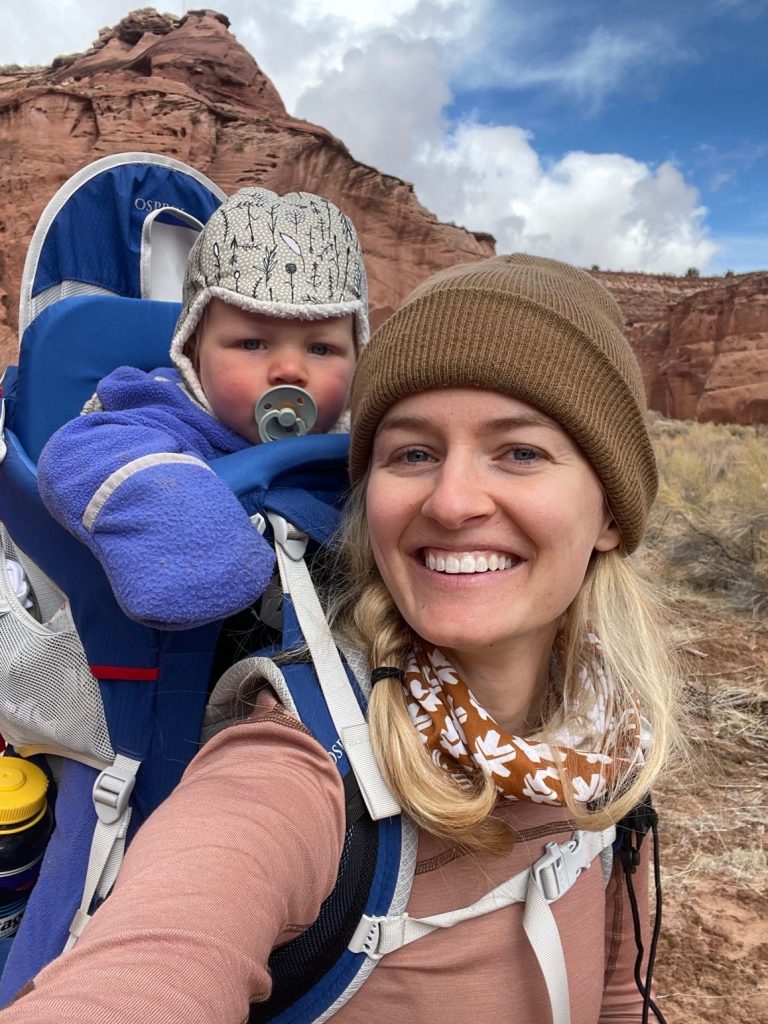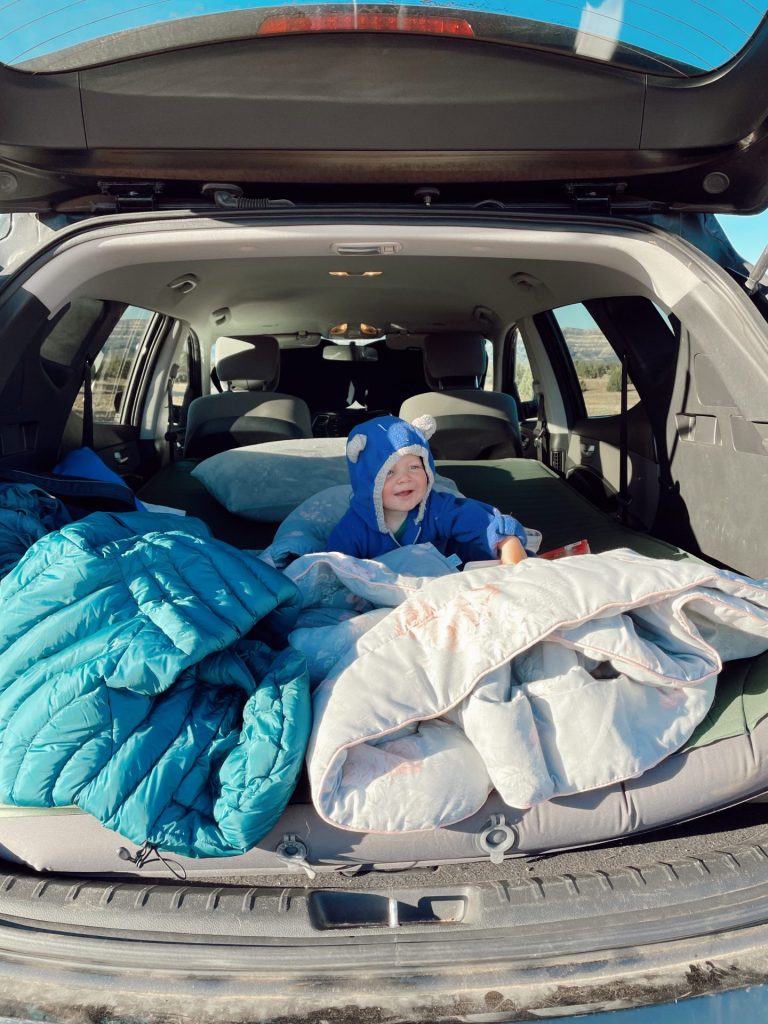Today I’m sharing why you should have a first aid kit for the car, what you should keep in it, and the first aid kit that I have chosen to keep in my car.

Something everyone should have is a first aid kit for the car. You never know when an accident or minor injury might happen, and having supplies on hand can make a big difference. Whether it’s a cut, a burn, or a sprain, a well-stocked kit lets you handle things quickly until you can get proper help. Plus, it gives me peace of mind knowing I’m prepared for those unexpected bumps along the road. It’s just one of those things that makes traveling a bit safer and stress-free.
If you want to see all the Essential Safety Items I Keep in My Car, check out this post.
I have always had a cheap first aid kit that mostly had bandaids in it, but about a year and a half ago I upgraded to the My Medic Mini First Aid Kit and haven’t looked back.
*This post is not sponsored. Some of the links shared in this post may be affiliate links meaning I make a small commission off of your purchase (with no extra cost to you). This allows me to continue to create free content for my readers. Thank you for your continued support!
Why Keep a First Aid Kit In Your Car?
Keeping a first aid kit for the car is a crucial aspect of being prepared for emergencies while on the road. There are so many reasons to be prepared with a first aid kit in your car, here are some of the reasons why I keep one in mine:
1. Immediate Response to Accidents
- Quick Treatment of Injuries: In the event of an accident, having a first aid kit allows you to provide immediate care for cuts, scrapes, and other injuries, potentially preventing them from becoming more serious.
- Stabilizing Injuries: You can stabilize injuries with bandages and dressings until professional medical help arrives.
2. Handling Minor Medical Issues
- Everyday Incidents: Minor injuries like cuts, burns, or splinters can happen anytime, whether you’re on a road trip or running errands. A first aid kit helps you address these issues promptly.
- Managing Allergies: If someone experiences an allergic reaction, having antihistamines in your kit can provide quick relief.
3. Emergency Situations
- Roadside Emergencies: In case you get stranded or face a roadside emergency, having first aid supplies can be crucial for treating injuries or medical conditions while waiting for help.
- Natural Disasters: If you encounter natural disasters like earthquakes or floods while driving, a first aid kit can be vital for addressing injuries when emergency services might be delayed.
4. Traveling with Children
- Child-Specific Needs: Children are more prone to minor injuries and illnesses. A first aid kit equipped with child-specific items ensures you can care for their needs immediately.
5. Outdoor Activities
- Adventures and Camping: If you enjoy outdoor activities like hiking, camping, or fishing, having a first aid kit in your car ensures you are prepared for any injuries that might occur during your adventures.
- Insect Bites and Stings: Items like hydrocortisone cream and antihistamines can help treat insect bites, stings, and rashes from plants.
6. Unpredictable Medical Situations
- Sudden Illness: You can provide immediate care for sudden illnesses such as nausea or headaches with medications in your kit.
- Chronic Conditions: If you or a passenger has a chronic condition, having necessary supplies in your first aid kit can help manage symptoms during travel.
What Should You Keep In Your First Aid Kit for the Car
Having a well-equipped first aid kit for the car is essential for handling minor injuries and emergencies on the road. There are many incidences when driving when you might not have cell service or may be far from medical attention. It’s important to be prepared incase something happens while you are driving, or out on a fun excursion.
You don’t need to go out and purchase a fancy first aid kit for the car. You can buy all of these things individually and put them in a container to keep in your car. I do find that many first aid kits are a better deal that buying all the supplies individually, however.
Here are some key items you should include in your car first aid kit and why they are important:
1. Bandages and Dressings
- Adhesive Bandages (Various Sizes): Essential for covering small cuts and scrapes that might happen while traveling, such as when handling luggage or during outdoor activities.
- Gauze Pads: Useful for larger wounds that might occur in an accident, providing a way to stop bleeding and protect the injury.
- Non-Adherent Pads: Important for wounds that need a non-stick dressing to avoid further pain and injury when removing the bandage.
2. Antiseptics and Ointments
- Antiseptic Wipes: Crucial for cleaning wounds to prevent infection, especially if you’re far from a clean water source.
- Alcohol Prep Pads: For disinfecting skin and tools, ensuring any wounds are properly cleaned before dressing.
- Antibiotic Ointment: Helps prevent infection in minor cuts and scrapes, which is vital when you’re on the go and can’t immediately access medical care.
- Burn Gel: Provides immediate relief and protection for minor burns, which can be common from hot car parts or campfires during road trips.
3. Medications
- Pain Relievers (Aspirin, Ibuprofen, Non-Aspirin): Essential for managing pain and reducing inflammation from injuries or headaches while traveling.
- Antihistamines: Important for treating allergic reactions, which can be unexpected and severe when you’re far from home.
- Hydrocortisone Cream: Useful for reducing itching and inflammation from insect bites, rashes, or plant reactions encountered during travel.
- Nausea Medication (Dramamine, Bonine) : Commonly used to prevent and treat motion sickness. It helps alleviate symptoms such as nausea, vomiting, and dizziness that might occur on the road.
- Natural Remedies: (Ginger Tablets or Candies, Peppermint Lozenges) : Ginger is a natural remedy known to help reduce nausea and is a good alternative for those who prefer not to take medication. Peppermint can help soothe an upset stomach and alleviate nausea.
*Make sure if you usually travel with children, to have any medications they may need that are safe for their age. It’s also helpful to include a dosing chart and a measuring device.
4. Tools and Instruments
- Tweezers: Necessary for removing splinters, glass, or other debris from wounds, which can happen if you’re involved in an accident.
- Scissors: For cutting bandages, gauze, or clothing if necessary, particularly in emergency situations where quick action is required.
- Medical Tape: For securing dressings and bandages, ensuring they stay in place even while you’re moving.
- Safety Pins: For securing bandages or creating slings from cloth in case of a broken bone or sprain.
5. Other Essentials
- Gloves (Nitrile or Latex): Protect yourself and the injured person from infections, especially when dealing with blood or bodily fluids.
- CPR Face Shield: Allows you to perform CPR safely without direct mouth-to-mouth contact, which is crucial if you come across someone in cardiac arrest.
- Thermal Blanket: Helps keep an injured person warm to prevent shock, especially if the accident occurs in a remote or cold area. Or in case you were to be stranded overnight somewhere in cold temperatures.
- Blister Strips: Useful for treating blisters from walking or hiking during a trip, ensuring you can continue your journey comfortably.
6. Instructions and Emergency Contacts
- First Aid Guide: Provides step-by-step instructions for handling common injuries and emergencies, which is invaluable if you’re not medically trained.
- Emergency Contact Information: Helps you quickly contact family, friends, or roadside assistance, saving valuable time during an emergency.
7. Any Person Medical Needs
- If you or someone in your family has any medical needs like allergies, or chronic conditions that require medication, make sure to keep those in your car in the case that you need them.
These items ensure that you are prepared to handle a variety of minor medical situations while on the road, providing immediate care and potentially preventing more serious complications until professional help can arrive.
My Car First Aid Kit: The My Medic Mini First Aid Kit

When I was looking for a car first aid kit, I wanted something that was compact, but had everything I would need in an emergency. I’m an active mom and go hiking and camping with my kids often. I ended up going with the My Medic Mini First Aid Kit. It’s a compact and versatile emergency kit designed for convenience and preparedness. I’ve had it for about a year and a half and have used multiple items in it throughout that time.
Despite its smaller size, it’s packed with essential medical supplies, including bandages, antiseptic wipes, burn gel, and a CPR face shield. The kit’s durable, water-resistant case and organized compartments make it easy to access and ideal for various settings, from outdoor adventures to everyday travel.
The My Medic Mini First Aid Kit comes in a rugged zippered case that has a laser-cut MOLLE & Velcro front panel. This allows you to easily customize it with any additional accessories you might want to add.
I love how it categorizes the supplies in it so you know exactly what to grab. There are different colors and labels depending on what the bag in the first aid kit contains: Red is labeled Bleed and contains bandages, Orange is labeled Burn and contains burn cream, Black is labeled Tools and contains tweezers, a pen light, and whistle, and so on. This is really helpful if you are in an emergency situation and don’t have time to dig through a ton of supplies.
It’s the perfect first aid kit for the car for anyone who wants to be ready for minor injuries and emergencies. The My Medic Mini First Aid Kit is a reliable and portable solution for peace of mind and I would highly recommend it.
I have a video walk through I shared on my Instagram page you can check out!
My Medic Mini First Aid Kit Specs:
I have found the My Medic Mini First Aid Kit to be the perfect first aid kit for the car size. Here are the dimmensions:
- Height: 8.5 Inches
- Width: 6 Inches
- Depth: 4 Inches
- Weight: 2.5 – 2.7 pounds
What Comes in the My Medic Mini First Aid Kit

As I mentioned, the My Medic FAKs divide the supplies into categories by colored labeled packets. This helps you know exactly where to look when you open up your kit. Here is a list of everything included in the My Medic Mini First Aid Kit.
Bleed (Red)
- 6 1×3 SuperSkin Bandages
- 3 2×4 SuperSkin Bandages
- 3 Fingertip SuperSkin Bandages
- 2×2 Non-Adherent Pad (2)
- 2×2 Gauze Pad (2)
- 4×4 Gauze Pad
- Conforming 2 Gauze Roll
Burn (0range)
- 3 Burn Gel Packets 3.5g
Medication (Yellow)
- Ibuprofen
- APAP
- Aspirin
- Diotame
- Medi-Meclizine
- Diphen
- Cold & Flu Med
Sports and Outdoors (Green)
- Space Blanket: Thermal insulation blanket designed to reflect 90% of body heat
- 3 Pieces of SuperSkin Blister Strips
Topical (Seafoam Green)
- Super Wash: Saline wash for irrigating wounds or eyes
- Antiseptic Wipe
- Hand Sanitizer
- Triple Antibiotic
- Lip Balm
- Sunscreen
- White Petrolatum
- Hydrocortisone
- Oral Pain Relief
- Friction Frosting
Airway (Light Blue)
- CPR Shield: Creates barrier to prevent transmission of disease when performing CPR
Hydration (Dark Blue)
- 2 KoKos Hydration Packets
- 2 Water Purification Tablets
Sprain and Fracture (Purple)
- Finger Splint
- Sensi wrap 1″ x 15′
Tools and Devices (Black)
- Small EMT Shears:
- 1 Penlight
- 1 Tweezer
- 1 Whistle
- 1 Pair Disposable Gloves
- 1 Pack of 3 Secure Strips
- 1 Tube of Liquid Skin
- Cloth Tape 1″ x 30″
- Digital Stay Alive Guide: Download card for the First Aid and Survival guide
Whatever first aid kit for the car you decide to keep, it’s just important that you have one. Be sure to check it regularly and restock used or expired items.






Pingback: Essential Safety Items To Always Keep in Your Car - Hailey Outside